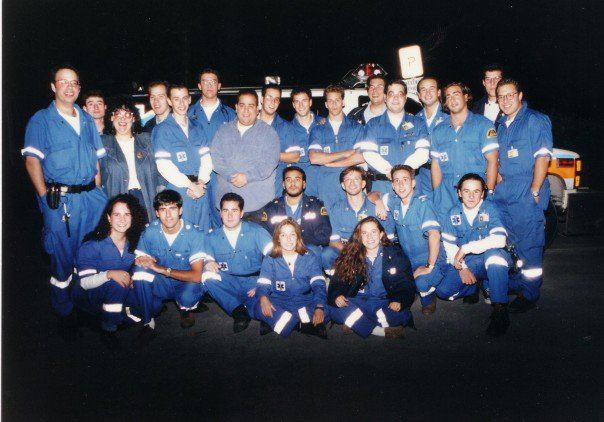by Hal Newman
I’ve been looking at medical surge as a series of ever-larger waves crashing ashore in that they continue picking up more and more debris and carrying that further inland until finally they begin to ebb.
All the surge plans I’ve seen are based on the notion that the emergency healthcare system will need to handle more and more patients until finally the peak flow is reached.
There is a fair bit of ‘resurrection medicine’ built into these plans – the need to reach into death’s door and pull the victims back into the land of the living.
Shouldn’t we be looking at creating critical care field triage levels that would prevent the surge waves from carrying patients requiring resurrection-medicine from reaching the ERs? Isn’t it about time we took a hard look at plans that would include field-based palliative care units?
Any idea on the total number of mechanical ventilators and respiratory techs there are in any given major jurisdiction in the United States or Canada? Anyone have a breakdown on that number per hospital – just the major centers?
So now that we’re seeing a strong run on tickets for a possible Kick Your Ass tour for A/H1N1 in the fall, does anyone have any idea what we can anticipate in terms of both clinical attack and absentee rates when it comes to the respiratory techs themselves? Has anyone got any ideas about who to train and how to train them in Ventilation for the Uninitiated?
Does anyone have numbers for pediatric vents and resp techs at pediatric centers? It seems that the vast majority of hospitalizations in a more virulent return of H1N1 would be among children below the age of 15. Unless I’ve missed something, we just do not have the collective pediatric resources to provide care on that scale.
The estimates I’ve heard sure don’t give me any peace of mind – and the fact that the actual numbers seem to be so closely guarded also gives me pause. Certainly don’t get the vibe there are overwhelming numbers of either ventilators or the human beings required to make them effective lifesaving tools.
As my friend Roy says, “It has been nearly five years since the discussion of vent shortages in the United States began with SARS as the stimulus. So, in five years the US has apparently done little to increase the number of ventilators available for pandemic flu surge and train a much-enhanced healthcare cadre to manage ventilator systems in compromised patients.”
The problem is, as Roy so aptly quips, “Vents are not particularly sexy or worthy of discussion in a healthcare system barely able to manage a bad season of colds and flu.”
My educated guess would be that roughly 85 percent of the available mechanical ventilators in Montreal hospitals are currently in use. Combine that with an average ER occupancy rate in the 90-something percent range and we’re not talking surge – we’re talking about a damned near bankruptcy of the emergency healthcare system.
Roy’s educated guess is that the same percentage of current daily use holds true for the 100,000 or so ventilators available across the United States at any given moment.
“Disaster preparedness typically includes plans that address the need for surge capacity to manage mass-casualty events. A major concern of disaster preparedness in respiratory therapy focuses on responding to a sudden increase in the volume of patients who require mechanical ventilation.” – Mechanical ventilation in mass casualty scenarios. Augmenting staff: project XTREME, Hanley ME, Bogdan GM. 1: Respir Care. 2008 Feb;53(2):176-88; discussion 189
While I recognize the wonderful work done by major trauma centers that kick themselves into overdrive to deal with 20-30 seriously injured patients from a single incident, I believe it’s time to take a real-world look at what happens when there are 100 or 200 or 300 or maybe 1,000 people who are sick or injured?
Or when there are tens of thousands of people concerned about their children who are presenting with the signs and symptoms of pandemic flu.
And perhaps it’s not a one-time event.
I live in Montreal where the EMS system runs on a Basic Life Support platform and where firefighter-first responders have been limited to a SSU [sticky side down] approach when it comes to providing care for patients prior to an ambulance crew’s arrival.
The idea that somehow the combined Fire/EMS system would be able to successfully triage, then transport more than 100 critically ill patients from a single incident without completely outstripping available resources is pretty well pure science fiction.
The EMS system is constantly short of ambulances and crews. There are a finite number of firefighter first responders. And that’s when the going is relatively good. Throw in an icy night and a few multi-patient car crashes and maybe simultaneous multi-alarm fires [definitely not unheard of in a major metropolitan area].
And we don’t need to be talking pandemics or terrorism. We could be talking about an ethyl-methyl-bad-stuff incident at one of the multiple chemical facilities that are smack dab in the middle of a heavily populated center. All that’s required to tip the balance between feasible and outright chaos is a higher percentage of critically ill patients.
If the walking wounded aren’t – then we’ve got a serious problem on our hands. It’s not as if we’re going to tell the populace to get a pick-up truck and an air mattress and take their neighbors to the ER on their own. One major incident doesn’t come with permission to suspend operations for the rest of the population. Just standing with Serge and talking with Roy watching the waves crash on Tundra Beach.
Be well. Practice big medicine.


